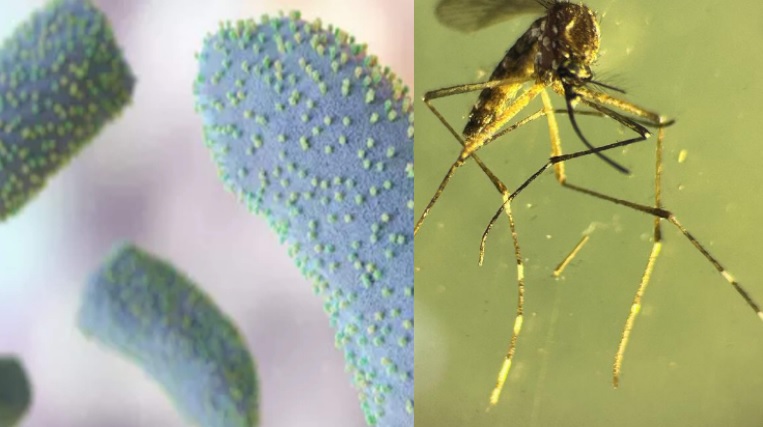
Chandipura Virus: Gujarat Confirms First Death; Two New Fatalities Reported in Panchmahal
On Wednesday, the state government said that out of the total 29 suspected CHPV patients reported so far, 14 have already died.
A four-year-old girl from Aravalli district’s Mota Kanthariya village, who died at a civil hospital in Sabarkantha, tested positive for Chandipura virus (CHPV), said the National Institute of Virology (NIV) on Wednesday, making it the first such fatality confirmed in Gujarat.
On Wednesday, the state government said that out of the total 29 suspected CHPV patients reported so far, 14 have already died.
“The sample of a four-year-old girl from Aravalli, who died at the Himatnagar civil hospital in Sabarkantha district (earlier this month), tested positive for Chandipura virus. This was the first death (confirmed) due to Chandipura virus infection in the state. Three other samples of suspected victims tested along hers are, however, negative,” said Raj Sutariya, chief district health officer (CDHO) of Sabarkantha.
An 18-month-old baby also died of suspected CHPV infection in Gandhinagar on Wednesday, taking the death toll to 14 in Gujarat, according to data released by the state government.
Meanwhile, a four-year-old girl from Kotda village in Panchmahal’s Godhra taluka, who was undergoing treatment at Vadodara’s SSG hospital, died of suspected CHPV infection — the first case from the district. The Panchmahal district health department is also probing the death of an eight-year-old boy from Ghoghamba taluka, who died at a private hospital in Vadodara earlier this month, said officials.
Panchmahal CDHO Dr M R Chaudhari said: “On July 15, the girl from Kotda had developed symptoms of CHPV infection such as high fever, vomiting and convulsions. She was admitted to hospital the next day. It was the first case of suspected CHPV in the district, following which, we undertook surveillance across the village.”
“During our survey, it came to light that the child from Ghoghamba was admitted to a private hospital on July 4, but he died on July 6. It is suspected he suffered from CHPV infection. We are examining his history,” Chaudhari added.
‘29 suspected CHPV cases’
So far, the state government has reported 14 deaths due to suspected CHPV infection, including the one confirmed from Aravalli district; two other deaths were reported from Morbi, along with one each from Surendranagar and Rajkot.
Of the total 29 cases of suspected CHPV (also called acute encephalitis syndrome), two are from Rajasthan’s Udaipur and one from Madhya Pradesh’s Dhar. One of the patients from Rajasthan has died of suspected CHPV infection, it added.
In addition to the confirmed fatality from Aravalli, 13 suspected CHPV deaths are yet to be confirmed. Multiple samples have been sent to the Pune-based NIV for confirmation, state Health Minister Rushikesh Patel said on Wednesday.
Speaking to The Indian Express, the Sabarkantha CDHO mentioned that the sample of the deceased child from Rajasthan — who was admitted at the Sabarkantha civil hospital — could not be collected. Sutariya said: “We could not collect the sample of the first child who died of suspected CHPV infection as that case was among the first patients, and nobody was showing symptoms back then.”
The state government said on Wednesday that as many as 51,725 people and 10,181 residences have been surveyed so far; malathion powder has been dusted at 3,741 houses across districts. Rapid response teams (RRTs) under the various district health departments have also been directed to probe all the suspected cases of CHPV infection.
State health minister shares advisory
Gujarat Health Minister Rushikesh Patel, meanwhile, shared an advisory on X and said “several suspected CHPV cases (caused by sandflies) have been reported from different districts”. “The symptoms include high fever, diarrhea, vomiting, seizures and loss of consciousness. It affects children until the age of 14. If any of these symptoms are spotted, contact the nearest health centre immediately,” he wrote on Wednesday.
On sandflies, Patel said: “Sandflies lay eggs that turn into larvae like mosquitoes and then into adult flies… These flies can be spotted by naked eyes, although they are four times smaller than regular house flies. It lays eggs in the interior or exterior kutcha or pucca walls that are damp or have crevices.” Further stating that to prevent sandflies from laying eggs, people must “fill up the crevices and spaces in the exterior and interior walls” and allow “ventilation” in rooms, he stated in the advisory: “Children under 14 years of age must sleep in mosquito nets or use repellents. Avoid children from playing in courtyards without proper clothing…”
The Panchmahal CDHO said that there are other suspected cases in the Panchmahal district as of now, and “so far, the numbers (of cases) are not many, and we are undertaking measures as well as collecting serology test samples of children randomly from areas recording fever cases”. The district health teams undertook preventive measures such as advising villagers to cover gaps in walls, and ensure hygiene and sanitation among others before the arrival of monsoon in the state, Chaudhari said, adding: “The CHPV virus is more common in rural areas as its breeding ground is usually dark holes in trees or gaps between bricks of kutcha homes.”


